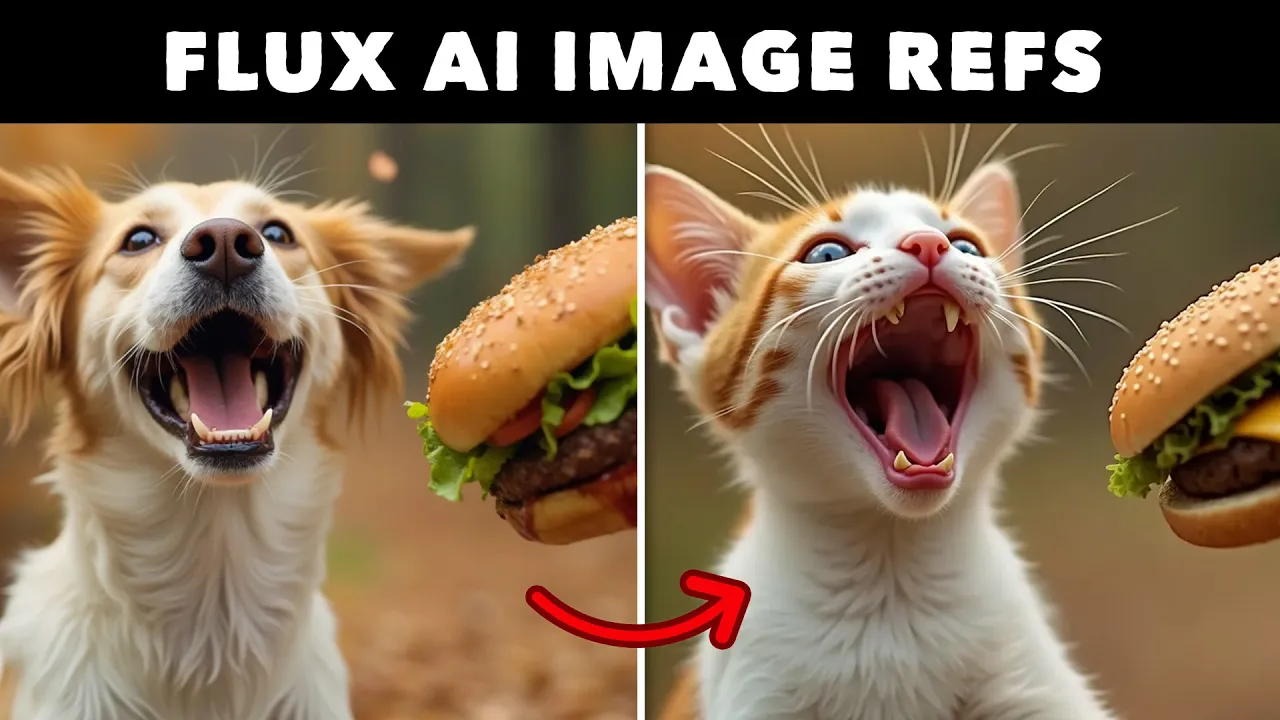How to use REFERENCE IMAGES in FLUX AI (Tutorial)
Howto & Style

Introduction
In this tutorial, we will explore how to use the reference image function in FLUX AI, a powerful tool hosted on the platform Replicate Doom. If you are new to FLUX and want a basic overview of how to set it up, check out my beginner's tutorial linked in the description.
Getting Started with Reference Images in FLUX
Once you have FLUX running in the Dev module, you will encounter the “Image File” option to upload your reference image. You can drag and drop a file from your desktop, paste a URL, or upload a file directly. For this demonstration, I will drag in an image of a dog jumping to catch a burger that I created using FLUX previously.
It’s important to understand that the reference image function doesn’t modify the original image directly. Instead, it analyzes key elements like lighting, composition, and positioning to inform your new image request or prompt.
Crafting a Basic Prompt
Let’s create a prompt by simply typing “cat jumping trying to catch burger.” Note that I haven't mentioned specific details about the environment. When I click "run," the system will automatically adjust the aspect ratio to match the reference image instead of the prompt.
After processing, we expect to see an output that has similarities to the original image. As anticipated, our new image features a cat in a similar position with a few variations, such as the burger’s appearance.
Experimenting with Variations
Using this method, you can rapidly generate a catalog of variants based on a single reference image. If, for instance, a client wanted the scene changed from burgers to donuts, I could simply modify the prompt and rerun the request.
Another crucial setting is the “Prompt Strength” slider, which controls the balance between the influence of the reference image and the details in your prompt. The default value is 0.8, which generally yields satisfactory results by effectively blending the original image’s details with your custom prompt.
Adjusting the Prompt Strength
- Lower Prompt Strength (≤0.8): Decreasing this value pulls more influence from the reference image. If set to zero, the output would be an exact replica of the reference image.
- Higher Prompt Strength (≥0.8): Increasing this value decreases the influence of the reference image, allowing the prompt to dictate more of the final result.
By nudging the prompt strength down to 0.7 or 0.75, you can fine-tune the output to favor more of the original image. Conversely, raising the value to 0.9 or 0.95 will remove some of the reference details and give more weight to your prompt specifications.
Outcomes of Prompt Strength Adjustment
When I experimented with setting the prompt strength to 0.95, we observed a significant difference. While the cat remained on the left, many of the original image’s characteristics changed. Raising the strength further made it evident that the system was responding more to the prompt and less to the reference image.
By adjusting to an even lower setting of 0.5, the output began to blend traits of both the cat and the dog, creating a unique hybrid animal. This could lead to fascinating and unconventional results.
Conclusion
The reference image function in FLUX AI is a powerful feature that allows for tremendous creative flexibility. By seamlessly integrating different influences from any type of image—whether a photograph, artwork, or even a hand-drawn sketch—you can build upon previously generated ideas or create entirely new visual concepts.
Keywords
- FLUX AI
- Reference Images
- Prompt Strength
- Image Generation
- Variants
- Composition
FAQ
Q: What is the purpose of using a reference image in FLUX AI?
A: Reference images are used to analyze and extract key elements like lighting and composition without directly modifying the original image. It informs the output of new prompts.
Q: How do I adjust the balance between the reference image and my prompt?
A: You can adjust the "Prompt Strength" slider. Lower values favor the reference image, while higher values give more weight to your prompt.
Q: Can I create various outputs from a single reference image?
A: Yes, you can generate multiple variants based on different prompts while maintaining the essence of the original image.
Q: What types of images can be used as references?
A: Any image can be used, including photographs, artworks, and sketches, offering flexibility in your creative process.
Q: What happens if I set the prompt strength to 0?
A: Setting the prompt strength to 0 will yield an exact copy of the original reference image, with no influence from the prompt.

